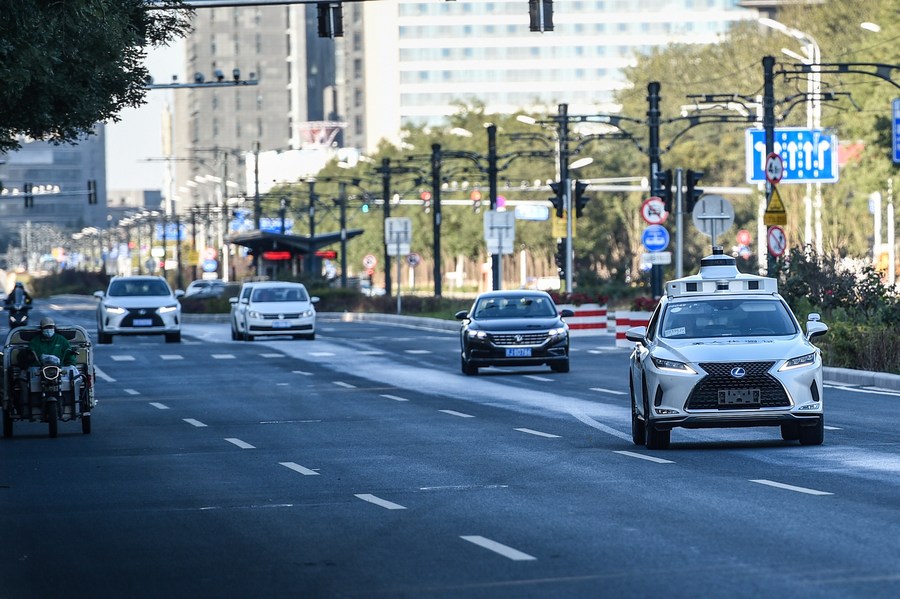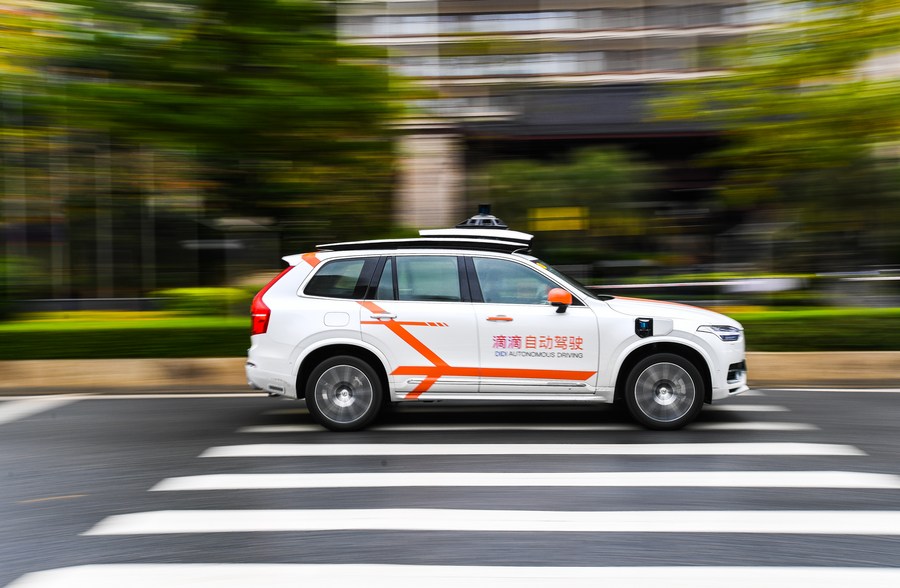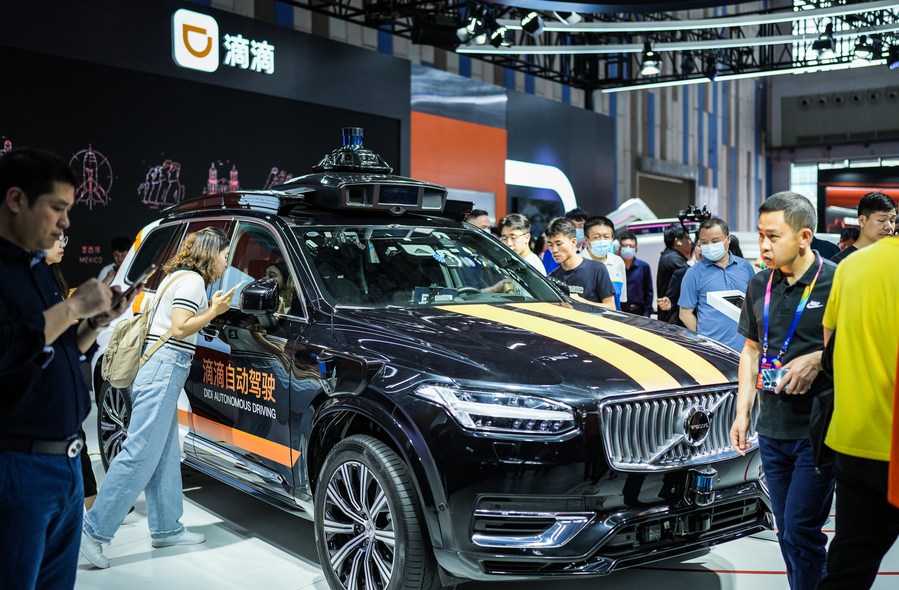
An autonomous vehicle (1st R) is in driverless test on a road in Yizhuang of Beijing, capital of China, Oct. 19, 2021. (Xinhua/Peng Ziyang)
Over the past four months, 116 self-driving taxis have completed over 1.5 million test trips with more than 95 percent positive passenger ratings.
GENEVA, Aug. 2 (Xinhua) -- The rollout of driverless taxis in China is set to pave the way for smarter urban planning, reduce traffic jams and lower the carbon footprint, an expert from the International Institute for Management Development (IMD) told Xinhua recently.
"It's a very timely and exciting topic because robotaxis (driverless taxis) will improve road safety, efficiency and reduce the carbon footprint. It's also a very convenient means of transportation," said Howard Yu, director of the IMD Center for Future Readiness.
In March, licenses were granted to Chinese tech giant Baidu and autonomous mobility startup Pony.ai to operate fully driverless taxis.

A Didi autonomous driving vehicle runs on a street in Huadu District of Guangzhou, south China's Guangdong Province, March 27, 2023. (Xinhua/Liu Dawei)
Over the past four months, 116 self-driving taxis have completed over 1.5 million test trips with more than 95 percent positive passenger ratings. The move marked the first time that a fully autonomous fleet of vehicles has been granted permission to operate in a major metropolis.
Yu outlined three crucial steps for the further development of driverless taxis in China and beyond: the technology readiness of a country, its regulatory regime, and the consumer adoption rate.
READY FOR THE FUTURE
Last month, the Office of the Beijing High-Level Autonomous Driving Demonstration Zone announced the launch of the commercial operation of autonomous vehicles. It is expected that a larger fleet of driverless taxis will soon become available for hire in Beijing.
"China is very strong thanks to its adoption rate around EVs (electric vehicles)," Yu said. "You also have nations like Norway, Singapore or Japan which aim to replace high labor costs and face the challenge of aging populations."

An autonomous vehicle is in driverless test on a road in Yizhuang of Beijing, capital of China, Oct. 19, 2021.(Xinhua/Peng Ziyang)
According to a report by global consultancy IHS Markit, China's self-driving taxi market is expected to reach 1.3 trillion yuan (180 billion U.S. dollars) by 2030, accounting for 60 percent of the country's ride-hailing market.
"China has been at the forefront of optimizing traffic and road safety. What is likely to follow once the technology is adopted is to roll out to more crowded cities where traffic congestion has been a deep pain point," said Yu, adding that places like Southeast Asia probably would start to explore.
DRIVING FORCES
In March, IMD's 2023 Future Readiness Indicator ranked the world's top revenue-generating players in finance, automotive, and consumer packaged goods, in terms of their ability to anticipate future challenges as well as limiting their risk exposure.
One key finding was the rise of Chinese players in the automotive industries, Yu told Xinhua when the report was released. For the first time, BYD, Li Auto, and XPeng from China all made it into the top 10 rankings of the global indicator.

Visitors experience a self-driving car at the China International Big Data Industry Expo 2023 in Guiyang, capital of southwest China's Guizhou Province, May 26, 2023. (Xinhua/Tao Liang)
Discussing whether self-driving cars represent the future of transportation, Yu said there would likely be initial consumer resistance and a preference for shorter trips.
However, he said that robotaxis are just "the last mile" of using artificial intelligence in our daily lives.
"Robotaxis are on the ground, bringing people from point A to point B. But then the great potential becomes the city planning, traffic control, eliminating traffic jams and leveraging tariffs in certain areas, recommending alternative traffic routes," he said.
"This would be a much more holistic way of managing crowded cities and really reducing the carbon footprint as well because that could encourage a much more systematic way of carpooling," Yu stressed.




 A single purchase
A single purchase









